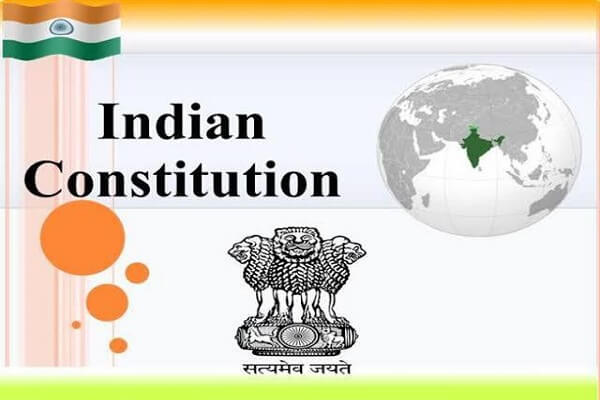Indian Constitution is the supreme law of India. In order to run any kind of organization, rules and regulations are much important. So, Indian Constitution is a supreme law of our country which states rules, regulations, rights, duties, and powers of the government.
So, our article presents the General Knowledge Questions and Answers of Indian Constitution through which we will get some idea on our Indian Constitution. Indian Constitution is also known as Bharatiya Samvidhan. There are powers and duties of our government given by our Indian Constitution. Powers and Duties are distributed among the members of the government.
Answers are in BOLD
#1. When was the Constitution of India came into effect?
27 January, 1949
26 January, 1947
26 January, 1949
26 January, 1950
#2. To whom the General Purpose Committee advises?
The vice-president
The speaker
The president
The Prime Minister
#3. Who among the following appointed the Governor of the states in India?
The Chief Ministers
The Prime Minister
The President
The Parliament
#4. How many Schedules are contained in the Constitution of India?
12 schedules
25 schedules
10 schedules
20 schedules
#5. Who is empowered to declare National Emergency?
Governors of State
President of India
Parliament
Prime Minister of India
#6. Who appointed the Chief Justice and Other Judges of the Supreme Court of India?
The C.M of the concerned State
Prime Minister of India
The Governor of the concerning State
President of India
#7. Which of the following is called ‘Mini Constitution’?
44th constitutional amendment
42nd Constitutional Amendment
Government of India Act, 1919
Government of India Act, 1935
#8. Which of the following is not a feature of Indian parliamentary system?
Appointment of Executive to the Legislature
majority party power
Presence of Actual Executive and Nominal Executive
All of the above
#9. The idea of ’concurrent list’ in the Indian constitution is taken from the Constitution of …………?
Canada
Australia
Japan
Ireland
#10. Seventh Schedule is concerned with …………?
Partition of powers between center and states
From Panchayati Raj
From the judicial areas of the states
From languages
#11. What is the main function of Directorate?
Data collection
Decision making
Policy implementation
Policy making
#12. What is the main function of District Administration?
Decision making
To instruct the Subordinates
Policy making
To implement the policy of State Govt.
#13. Which article of the Constitution of India provides that each Indian state will have a governor?
Article 153
Article 152
Article 151
Article 150
#14. Which of the following is called the ‘popular chamber’?
Rajya Sabha
Gram Sabha
Lok Sabha
State Assembly
#15. With what subject do the Articles 5 to 8 of the Constitution of India deal?
Fundamental Duties
Citizenship
Union Executive
Details of Indian Union and its territory
#16. Which of the following exercised the most profound influence in framing the Indian Constitution ?
British Constitution
Australian constitution
U.S. Constitution
The Government of India Act, 1935
#17. Under which Article conduct of Business of Parliament is mentioned?
Article 99
Article 96
Article 90
Article 88
#18. Which one of the following Acts formally introduced the principles of elections for the first time?
Government of India Act, 1935
Indian Independence Act, 1947
Indian Councils Act, 1909
Government of India Act, 1919
#19. Rajya Sabha has exclusive jurisdiction in –
declaring a war
authorizing Parliament to legislate on a subject in the State List
creation of new States
financial emergency
#20. The Emblem of India (Prohibition of Improper Use) Act was implemented in the year –
2002
2003
2004
2005
#21. President of India is elected by –
Members of Parliament and Members of State Legislative Assemblies
Rajya Sabha
Lok Sabha
Parliament Members
#22. The Union Budget is presented under which Article of the Constitution of India?
122
113
112
111
Article last re-published on July 27, 2020.
